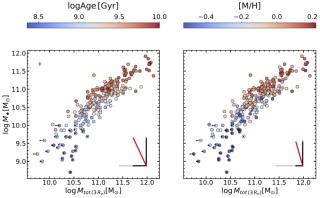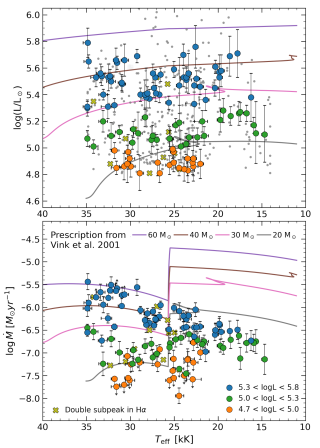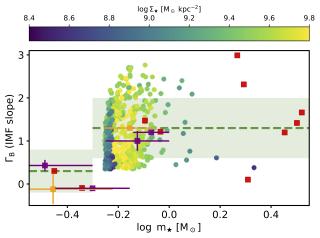We have selected the Galactic HII region M43, a close-by apparently spherical nebula ionized by a single star (HD37061, B0.5V) to investigate several topics of recent interest in the field of HII regions and massive stars. We perform a combined, comprehensive study of the nebula and its ionizing star by using as many observational constraints as possible. For this study we collected a set of high-quality observations, including the optical spectrum of HD3706, along with nebular optical imaging and long-slit spatially resolved spectroscopy. On the one hand, we have carried out a quantitative spectroscopic analysis of the ionizing star from which we have determined the stellar parameters of HD37061 and the total number of ionizing photons emitted by the star; on the other hand, we have done a empirical analysis of the nebular images and spectroscopy from which we have find observational evidence of scattered light from the Huygens region (the brightest part of the Orion nebula) in the M43 region. We show the importance of an adequate correction of this scattered light in both the imagery and spectroscopic observations of M43 in accurately determining the total nebular Halpha luminosity, the nebular physical conditions. and chemical abundances. We have computed total abundances for three of the analyzed elements (O, S, and N), directly from observable ions (no ionization correction factors are needed). The comparison of these abundances with those derived from the spectrum of the Orion nebula indicates the importance of the atomic data and, specially in the case of M42, the considered ionization correction factors.
Advertised on
It may interest you
-
 Despite the fundamental role that dark matter halos play in our theoretical understanding of galaxy formation and evolution, the interplay between galaxies and their host dark matter halos remains highly debated from an observational perspective. This lack of conclusive observational evidence ultimately arises from the inherent difficulty of reliably measuring dark matter (halo) properties. Based on detailed dynamical modeling of nearby galaxies, in this work we proposed a novel observational approach to quantify the potential effect that dark matter halos may have in modulating galaxyAdvertised on
Despite the fundamental role that dark matter halos play in our theoretical understanding of galaxy formation and evolution, the interplay between galaxies and their host dark matter halos remains highly debated from an observational perspective. This lack of conclusive observational evidence ultimately arises from the inherent difficulty of reliably measuring dark matter (halo) properties. Based on detailed dynamical modeling of nearby galaxies, in this work we proposed a novel observational approach to quantify the potential effect that dark matter halos may have in modulating galaxyAdvertised on -
 The properties of blue supergiants are key for constraining the end of the main sequence phase, a phase during which massive stars spend most of their lifetimes. The lack of fast-rotating stars below 21.000K, a temperature around which stellar winds change in behaviour, has been proposed to be caused by enhanced mass-loss rates, which would spin down the star. Alternatively, the lack of fast-rotating stars may be the result of stars reaching the end of the main sequence. Here, we combine newly derived estimates of photospheric and wind parameters, wind terminal velocities from the literatureAdvertised on
The properties of blue supergiants are key for constraining the end of the main sequence phase, a phase during which massive stars spend most of their lifetimes. The lack of fast-rotating stars below 21.000K, a temperature around which stellar winds change in behaviour, has been proposed to be caused by enhanced mass-loss rates, which would spin down the star. Alternatively, the lack of fast-rotating stars may be the result of stars reaching the end of the main sequence. Here, we combine newly derived estimates of photospheric and wind parameters, wind terminal velocities from the literatureAdvertised on -
 The universality of the stellar initial mass function (IMF) is one of the most widespread assumptions in modern Astronomy and yet, it might be flawed. While observations in the Milky Way generally support an IMF that is invariant with respect to the local conditions under which stars form, measurements of massive early-type galaxies systematically point towards a non-universal IMF. To bridge the gap between both sets of evidence, in this work we measured for the first time the low-mass end of the IMF from the integrated spectra of a Milky Way-like galaxy, NGC3351. We found that the slope ofAdvertised on
The universality of the stellar initial mass function (IMF) is one of the most widespread assumptions in modern Astronomy and yet, it might be flawed. While observations in the Milky Way generally support an IMF that is invariant with respect to the local conditions under which stars form, measurements of massive early-type galaxies systematically point towards a non-universal IMF. To bridge the gap between both sets of evidence, in this work we measured for the first time the low-mass end of the IMF from the integrated spectra of a Milky Way-like galaxy, NGC3351. We found that the slope ofAdvertised on